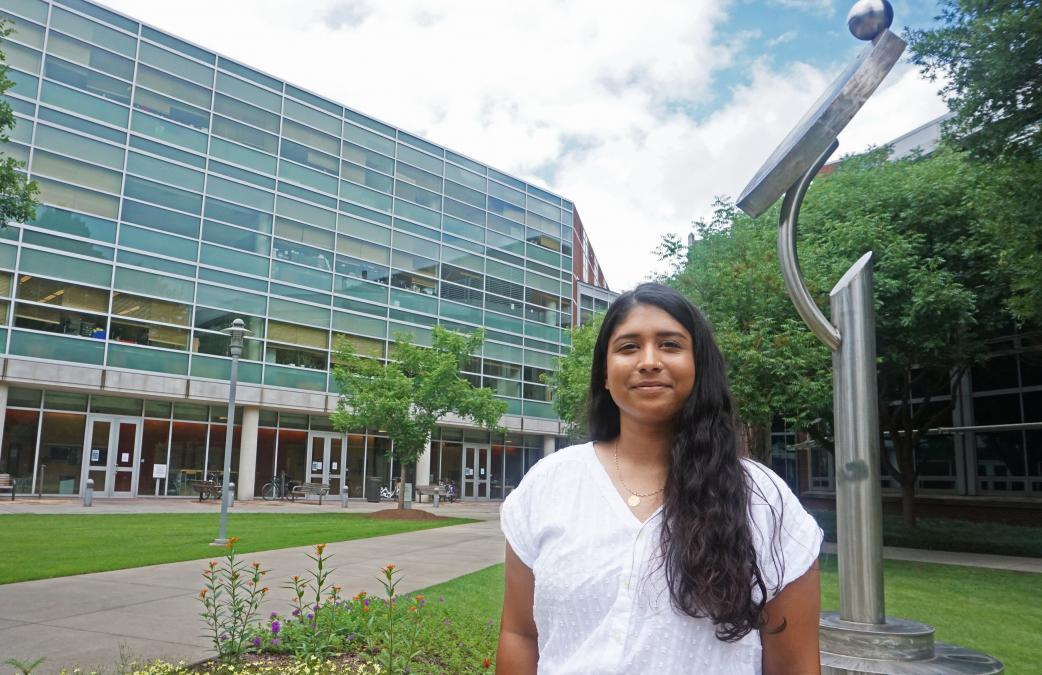Melissa Lokugamage Joins VC Firm to Guide Biotech Startups
As a naturally inquisitive person, Melissa Lokugamage has satisfied her diverse interests with a steady diet of new experiences.
A native of Sri Lanka who moved to Kansas City, Missouri, with her family as a young girl, she grew up playing the piano and violin, and danced in a local ballet company, shaping an abiding appreciation of the arts and culture.
Lokugamage discovered a love of science while an undergraduate at the University of Missouri, where she satisfied with a degree in bioengineering. Perhaps more significantly, she said, “I also found a passion for community outreach, activism, and mentorship.”
And now that she’s earned a Ph.D. from the Wallace H. Coulter Department of Biomedical Engineering at Georgia Tech and Emory University, Lokugamage is ready for the next new experience on her polymathic journey. She’ll make the transition this summer from graduate researcher in a university lab to venture capital associate for Massachusetts-based Alloy Therapeutics.
“As a graduate researcher, I was taught to think critically about data,” she said. “This thinking can help me evaluate and identify promising new technology. Joining Alloy will allow me to apply my deep understanding of drug delivery to new biotech company development.”
Atypical Path
Her Ph.D. advisor James Dahlman is confident in what Lokugamage brings to the table, even though going into venture capital straight from a research Ph.D. isn’t a typical path.
“But I’m not surprised Melissa was able to do it,” said Dahlman, assistant professor in the Coulter Department. “She can see around corners, so to speak, meaning she is great at identifying large scale trends before others. At the same time, she can evaluate the nitty gritty details of the science.”
That attention to the details, the kind of investigative skills developed over years in a lab, will allow Lokugamage, “to predict whether a company’s scientific foundation is sturdy enough to survive the valley of death between early stage science and the clinic,” Dahlman added. “I can’t wait to see what world-changing technologies she helps develop at Alloy.”
With her colleagues in Dahlman’s lab, Lokugamage’s Ph.D. research focused on RNA drug delivery. Now she wants to expand on that.
“While I enjoyed my time as a scientist and researcher, I was ready to use my understanding of drug delivery and medicine in a new way,” Lokugamage said.
She didn’t really have a career in mind when she entered Missouri, where Lokugamage earned a minor in women’s and gender studies that nurtured her interest in service and community.
“It started when I took a course on women’s health and history,” she said. “The subject was interesting, the students were thoughtful, and it felt deeply personal as a woman of color. I continued to fill my schedule with courses like this. I learned the importance of intersectionality and the role it plays in my life and my career. From there, I started joining service organizations.”
Scientific Journey
Meanwhile, an influential professor provided her with the tools to constructively pose important scientific questions, treating her as if she already was a grad student. Early and often, he sent her to speak at conferences. He encouraged her to apply for a summer internship at NASA, where she participated in the space agency’s Space Life Science Training Program. At the Ames Research Center in California, she was as a member of the BioSentinel Team, working on development of a biosensor to monitor the long-term effects of radiation on DNA.
She worked in an RNA-focused lab at Missouri, exploring the theory that RNA was the precursor molecule to DNA in the origin of life — and falling hard for the biomolecule. As she considered grad schools, Coulter BME was interesting because, while she’d been studying RNA in a more exploratory manner, “the Dahlman lab was applying RNA therapies to treat diseases. This felt like a way for me to continue working in the RNA space but grow as well,” she said.
Looking back on it, joining Dahlman’s research group was almost like a ground-floor opportunity — he’d only been on the Georgia Tech campus a year at the time, “and they were building a novel barcoding platform from the ground up,” she said. “It was really exciting. Dr. Dahlman provided the necessary support and guidance I needed to thrive during my Ph.D. The mistakes I made and the insight I gained in that type of environment were invaluable.”
Along the way, she developed a deep expertise in drug delivery, according to Dahlman.
“Melissa is a rising star, and that expertise will be critical as clinicians work with emerging companies to develop new gene therapies for patients,” he said.
Another new interest, another new experience, and Lokugamage is ready for it.
“The space of venture capital and investing are very new to me,” she said. “My biggest goal is to learn as much as possible. This new role is my chance to absorb as much information as possible, provide my assistance to a new team, and create new tech.”
Latest BME News
Jo honored for his impact on science and mentorship
The department rises to the top in biomedical engineering programs for undergraduate education.
Commercialization program in Coulter BME announces project teams who will receive support to get their research to market.
Courses in the Wallace H. Coulter Department of Biomedical Engineering are being reformatted to incorporate AI and machine learning so students are prepared for a data-driven biotech sector.
Influenced by her mother's journey in engineering, Sriya Surapaneni hopes to inspire other young women in the field.
Coulter BME Professor Earns Tenure, Eyes Future of Innovation in Health and Medicine
The grant will fund the development of cutting-edge technology that could detect colorectal cancer through a simple breath test
The surgical support device landed Coulter BME its 4th consecutive win for the College of Engineering competition.








